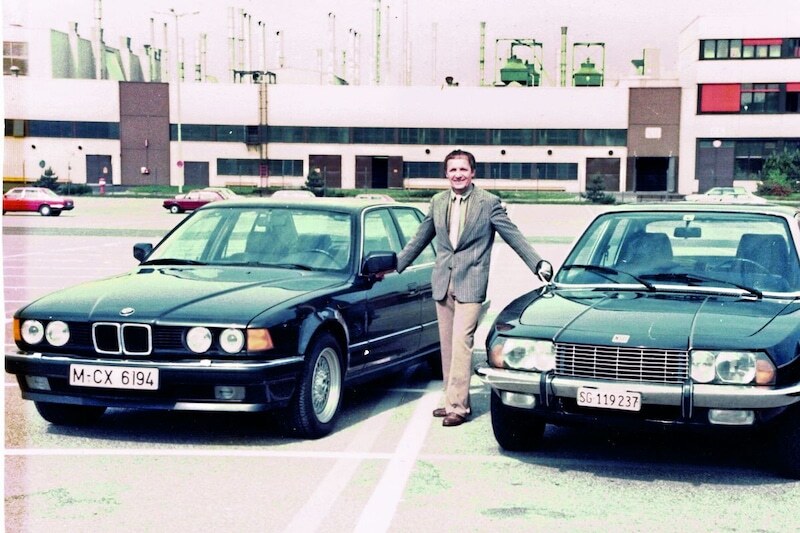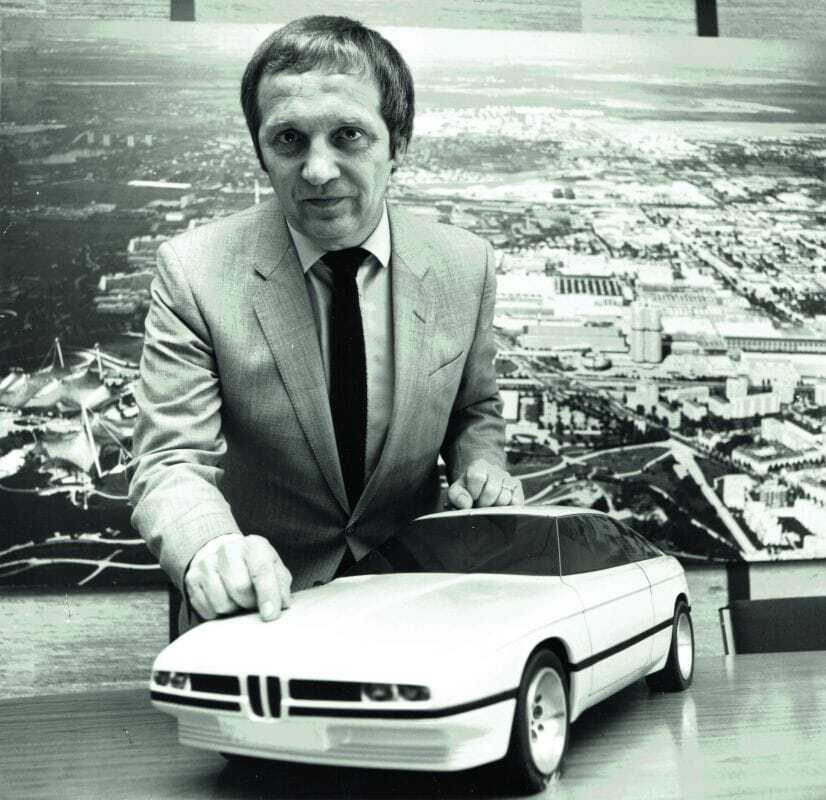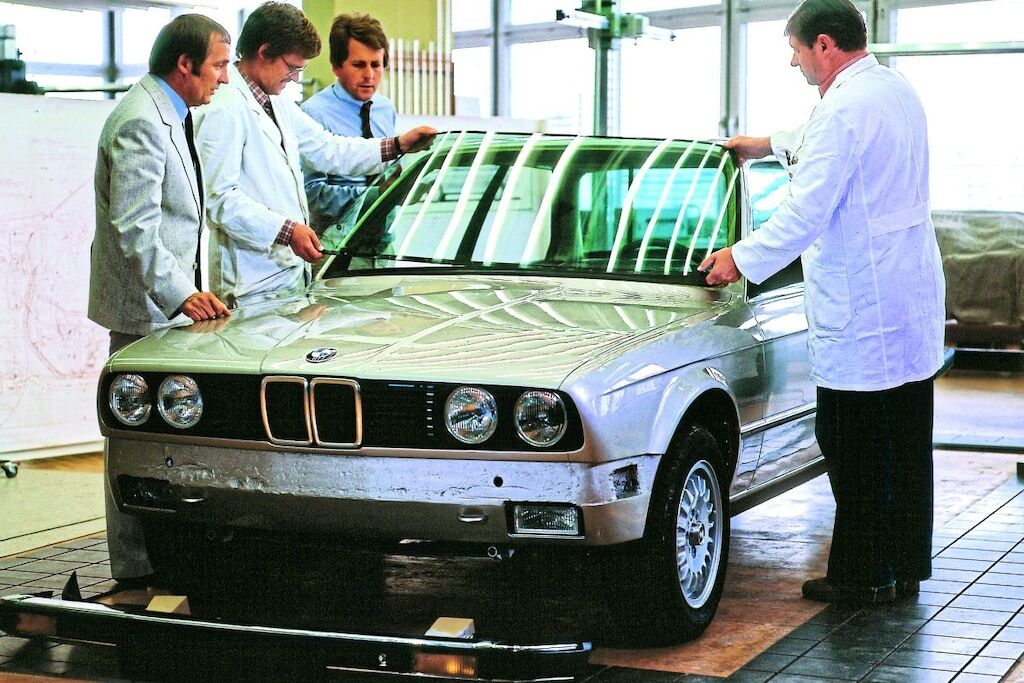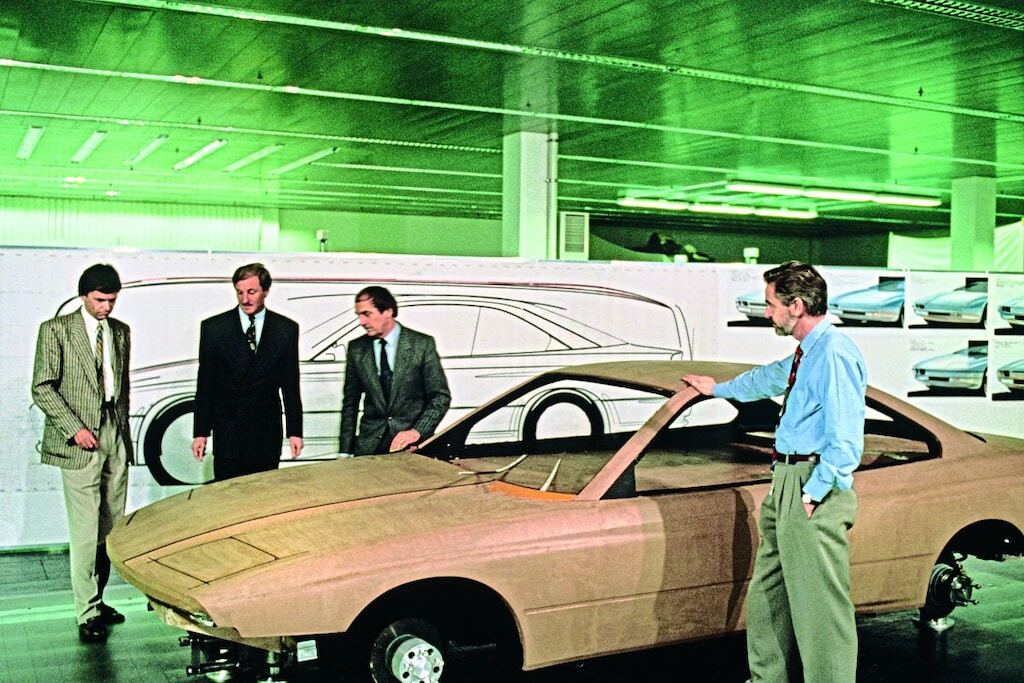
These legendary BMWs he designed
Claus Luthe designed the beautiful NSU Ro80, contributed to the Audi 50, and designed the second generations of the Audi 80 and Audi 100. However, things didn’t go well between Luthe, born in 1937, and Ferdinand Piëch, then the boss at Audi. Luthe went to BMW and happily continued to create excellently designed cars. The second BMW 3-series (E30), the second 7-series (E32), and the first BMW 8-series (E31) were created on the drawing board under Luthe’s supervision. Models that still appeal to enthusiasts.
After his time at NSU, Luthe moved to Ingolstadt, where he contributed to the design of the small Audi 50 (later marketed as the Volkswagen Polo 1), which was presented in October 1974. Two years later, the second generation of the Audi, the 100 C2, followed. Two years later, Luthe’s Audi 80 B2 was launched, also in its second generation. Ferdinand Piëch was appointed to the Board of Management in 1975 with responsibility for technical development in Ingolstadt. However, the Luthe/Piëch combination was not a success: “My father didn’t get along well with Piëch,” recalls daughter Barbara, in an interview with our colleagues at AutoBild Klassik for a story in which they reflect on the work of the top designer who passed away in 2008. “He was fired by him. On September 1, 1976, we moved to Munich.” The new employer: BMW.

Established BMW’s new design language
There, Luthe was allowed to design the second generation of the BMW 5-series and was confronted with a problem: the new BMW design language developed by Paul Bracq had just been introduced and could not be drastically changed. In addition, there was the limited budget of 100 million marks. With the E28, Luthe followed the same path as Ford with the Taunus. The passenger compartment remained virtually unchanged, while the bodywork at the front and rear and the interior were modernized. The end result looked like a facelift of the E12, at least on the outside, but the model became a sales success for BMW.

Commission for E30
In 1978, Luthe was commissioned to develop a successor to the BMW 3-series (E21). Again, he was confronted with the familiar problem of technical regulations and marketing restrictions. The designer could hardly use his creativity as he would have liked: “The model must sell well at all costs.” And it did, albeit with a few clever tricks. Luthe later recalled that the engine compartment was crammed with heavy bags of sand for press photos to mask the large wheel arches and high-legged front. And then there was the higher segment, where the E23 had been trying in vain for years to outdo the Mercedes S-class. BMW major shareholder Herbert Quandt made no bones about it: “We must overtake Daimler-Benz with the new 7-series!”.
But how? The Mercedes has a conservative design that appeals to customers. Do you opt for a similar approach or something completely different? Claus Luthe would not be Claus Luthe if he had not opted for the latter option. The BMW E32 is lower, slightly wider, looks more dynamic, and has a wedge shape. Progressive, but not ostentatious. Luthe was not sure how the Board of Management would react to the design and had sleepless nights because of it. In 1983, a 1:1 clay model was presented to the highest bosses at BMW. Luthe later said about this: “It was very exciting, we had taken a big step forward.” But the Board of Management was enthusiastic, and Luthe was therefore relieved.

Sports coupé: the 8-series
And then there was the idea that the head of the research department at BMW, Wolfgang Reitzle, had for a sports coupé. He showed up at Luthe one day with sketches in hand and asked him to build “this car.” Luthe did his best to create something within the framework of Reitzle’s ideas. The result was the beautiful BMW E31, or the 8-series. Then the next assignment awaited: a successor to the E30, which had to surpass the Mercedes-Benz W201, the 190. It was the last car to be created under the auspices of Claus Luthe. The E36 has a new, sloping front, the double headlights are placed behind a glass cover for the first time, and the rear is slightly higher. The mid-range car became a success. Luthe himself, of course, also drove a BMW at that time. Modest as he was, he opted for a 5-series. Reitzle walked into his office a little later. He explained to him that his people in management positions did not drive a 5-series, but a 7-series, and he tore up the order form.
In 1990 he left BMW, but remained involved with the company as a freelance consultant.